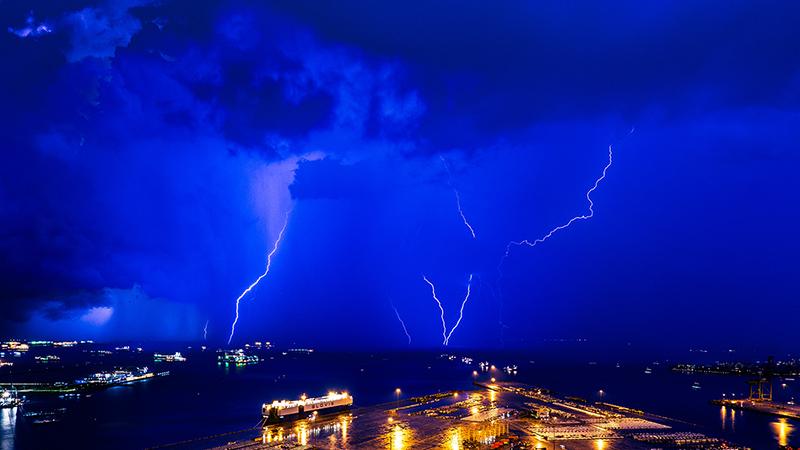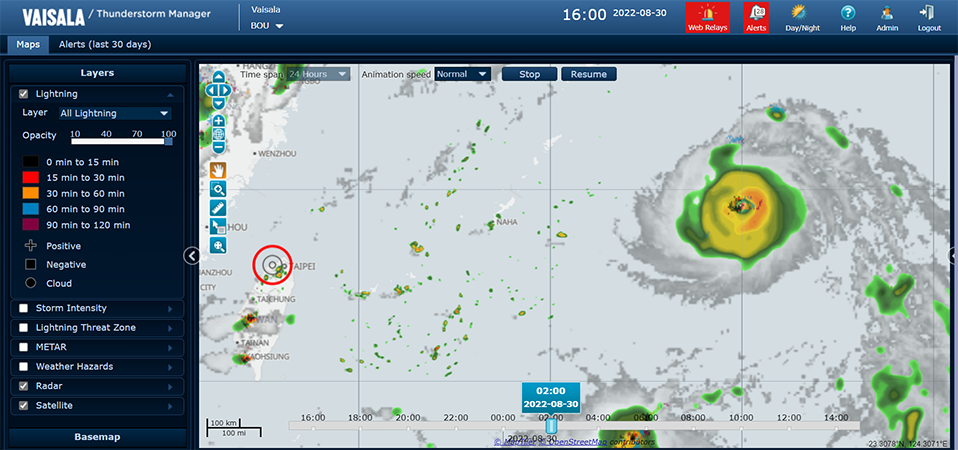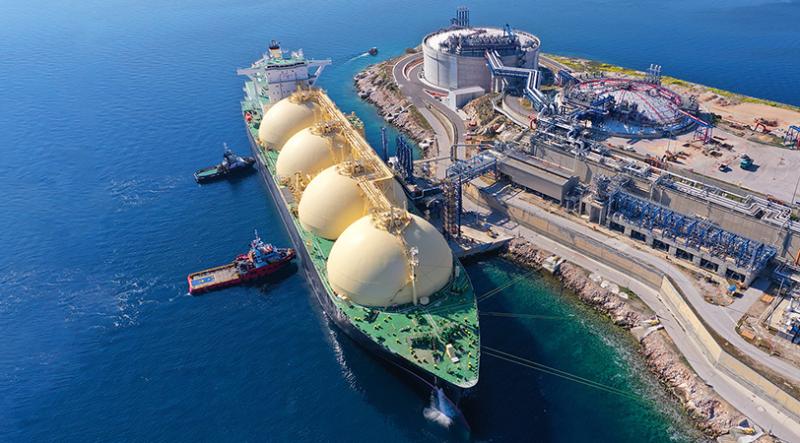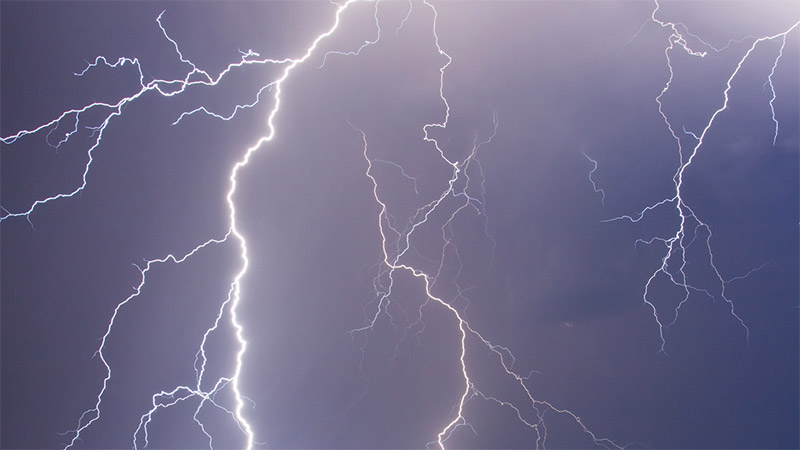How to mitigate lightning danger in the fast-growing LNG market?
Current geopolitical tensions in Europe have the energy industry racing for alternatives to Russian gas. Combined with rising demand for clean energy sources to mitigate the impact of climate change, energy market investments are speeding up.
Just recently, Germany released its plans to build two new liquefied natural gas (LNG) terminals in the northern coast and increase storage facilities1. At least 21 new or accelerated LNG import projects have been announced by EU countries this year, with more than half supported by floating storage and regasification units (FSRUs)2.
FSRUs are floating LNG import terminals capable of transporting, storing, and regasifying LNG onboard. These vessels have been in operation since 2005, moving quickly from a specialist niche to a mainstream solution for LNG imports. FSRUs have helped open new markets by providing LNG buyers – who may not have existing terminal infrastructure in place – with a time- and cost-efficient solution for solving import logistics3.
Lightning risks for O&G operations

Filling surging demand isn’t the only challenge, however. For oil and gas operations and storage (especially LNG transportation), severe weather can present a significant safety risk when vessels are loading or unloading flammable cargo4. Lightning is among the greatest hazards in these operations.
Every year, tanks, refineries, and O&G terminals around the world are damaged by lightning strikes, causing enormous damage to infrastructure and environment and endangering human lives. In July 2021, state-owned oil company Pemex’s drilling platform in the Gulf of Mexico experienced an oceanic fireball caused by a lightning strike and gas pipeline leak5. The economic loss of this kind of accident is staggering: Between USD 10 and USD 420 million for every accident, depending on the size of the affected6. A recent Vaisala survey also reveals that for oil and gas terminals, the estimated cost of a shutdown is USD 1,000/min or USD 60,000/hr. For LNG terminals, an interruption can cost USD 20,000/hr for loading or offloading.
For O&G operations, and again LNG in particular, an in-depth knowledge of electrical storm behavior and detection together with the capability to support EXI areas – also known as hazardous locations or explosive atmospheres – is critical to ensuring safety and enabling effective planning.
A reliable lightning detection system providing advance warning of the potential danger can help to ensure that sensitive operations are halted before lightning threatens the safety of operations and staff.
Prevention is the key
Lightning cannot be avoided but mitigating lightning related accidents with appropriate preparation and procedures is the easiest way to prevent accidents and protect lives and operations.
Services such as Vaisala Global Lightning Dataset GLD360 can be combined with local displays and alarms for on-site lightning warning. A comprehensive system like this provides early warning and tracking of thunderstorm movement. This can help the crew to plan and time additional safety measures for fueling, loading or unloading operations and know when to safely resume operations.
Many times, ports or terminals are using costly single point sensors that cannot tell you exactly where the lightning is. The advantages of the subscription-based Global Lightning Dataset GLD360 are
• Better location accuracy (1 km) and detection efficiency (80% CG flash globally) than single point sensors or other global lightning detection networks
• No sensor costs or maintenance
• Accurate distance measurements to your point of interest
• Accurate classification of in-cloud and cloud-to-ground lightning

The key inputs that go into formulating the threat a storm poses are location of operations, proximity to the storm and the storm’s speed, direction and intensity. When detecting lightning, it is important to know the time, location, type, and frequency of all strikes associated with a storm. Armed with this information, you can establish a proper warning system that keeps everyone safe while limiting downtime.
It’s also very important that a lightning detection system has the capability to detect storms that develop directly overhead. This happens infrequently but is much more dangerous, as thunderstorms that develop overhead require instant warning of an immediate threat.
Thunderstorm detection is part of the plan
Reliable advanced warning of potentially dangerous storms is key for formulating an effective emergency weather plan, especially for the O&G industry. A modern weather monitoring system allows weather-critical operations to continue while conditions safely permit and halted when the safety risk tolerance reaches its threshold.
FSRUs may or may not be a permanent solution to surging energy demand, but they need to be built with high safety standards in mind from the beginning.
Learn more about maritime lightning safety with Vaisala:
Service: Global Lightning Dataset GLD360
eBook and infographic: Keeping ports safe when lightning strikes
More information: Maritime weather awareness solutions
References
1 “Germany plans to build 2 LNG terminals to lower Russian gas dependence,” Zeynep Beyza Karabay, AA Energy, February 27, 2022
2 “Europe snaps up FSRUs to speed energy security,” John Snyder, Riviera Maritime Media Ltd., July 7, 2022
3 “FSRU,” Flex LNG Ltd., accessed August 15, 2022
4 “A safe port of call: Ensuring safe, predictable, and efficient port operations with maritime weather monitoring systems,” Vaisala Oyj, accessed August 15, 2022
5 “Pemex says lightning strike set gas on fire in Gulf of Mexico,” Mexico News Daily, July 6, 2021
6 “33 per cent of accidents in storage tanks in the Oil & Gas sector could be avoided,” Aplicaciones Tecnológicas, December 7, 2018



we, JSC “SEVERGAZ-INVEST” can supply the following Petroleum Products on CIF, TTO and FOB procedure: AVIATION KEROSENE, LNG, VIRGIN OIL D6, EN590 10PPM etc. Are you a Buyer mandate? Buyer or Broker?
JSC “SEVERGAZ-INVEST” is an intermediary company between buyers and sellers of petroleum products. We are a certified and direct mandate to refineries both in The Russian Federation and Non Russia. We have vessels with products from Refineries for buyers who are interested in Spot transactions on TTO, to any safe world port. Products available in open China water.
If you are in this field or have reliable petroleum products buyers who are both ready and capable, please contact us, let us know what Product, Volumes, Procedures and Buyer Destination Port.
JSC “SEVERGAZ-INVEST”
629736, Yamalo-Nenets Autonomous Okrug,
city of Nadym, Komsomolskaya street, 10, k. 1,2,3,4
Tel/WhatsApp +79167856894
E-mail: [email protected]
E-mail: [email protected]
Ass marketing director
Mr. Pavel Erik's